Paratha vs Naan: 5 Key Differences (Indian Husband Weighs In!)
Jan 17, 2024, Updated Feb 06, 2024
The Paratha vs Naan debate is an obsession for my half-Indian family. Here’s what sets these two flatbreads apart, from ingredients to nutrition.
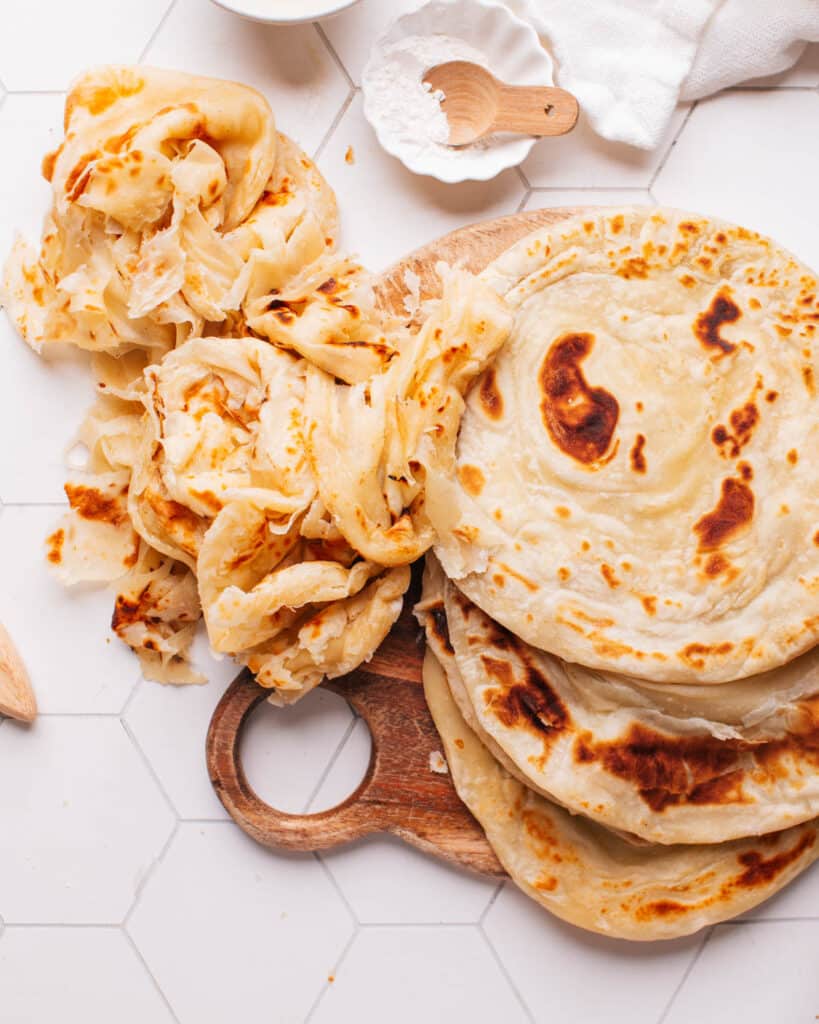
Paratha vs Naan: What’s the difference?
The short answer is that paratha is a flaky, layered flatbread made from whole wheat flour and ghee, often stuffed and pan-fried.
Naan, on the other hand, is a soft, chewy leavened bread made from all-purpose flour, yeast, and dairy, traditionally baked in a tandoor oven.
But there’s more to it than that! Stick around, and I’ll spill all the tasty secrets!
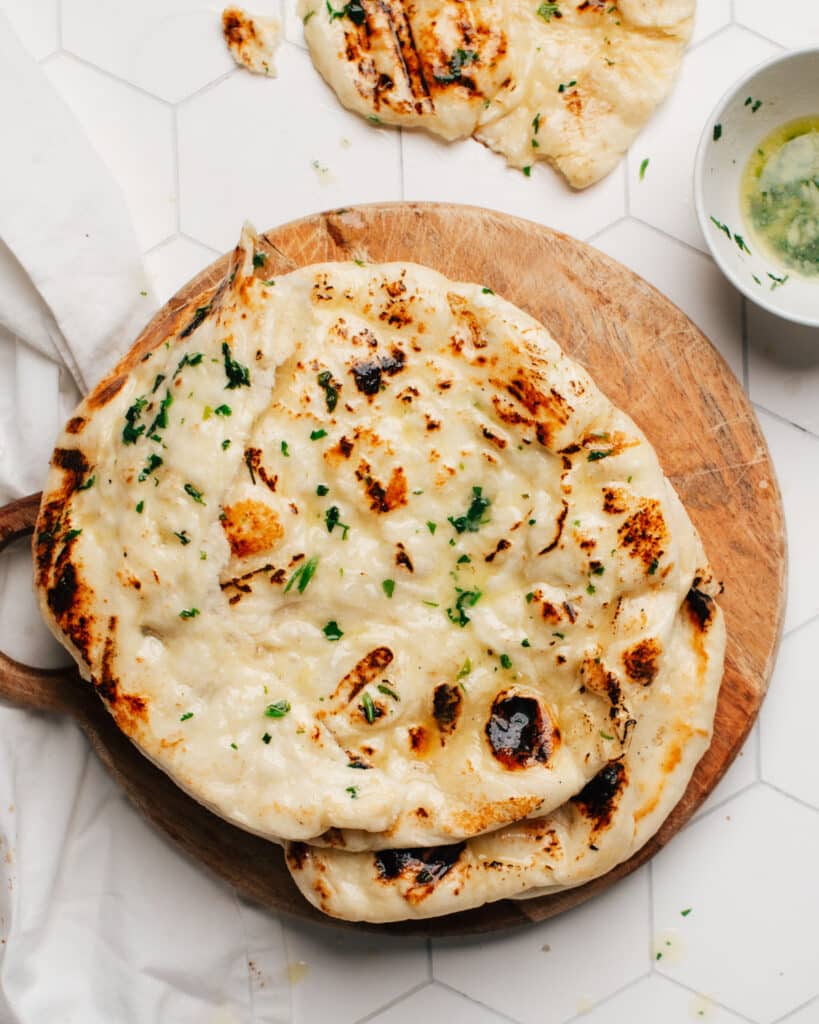
Paratha vs Naan: Comparing Favorite Indian Flatbreads
Paratha and naan have been my go-to flatbreads ever since I started obsessively exploring Indian breads with my Indian husband Adarsh.
Both Paratha and Naan are wildly-delicious flatbreads in Indian cuisine, but they are very different from one another in texture, taste, preparation, ingredients as well as nutrition.
Paratha is a staple in Adarsh’s South Indian cuisine, and holds a super special place in both of our hearts. But naan is a pillar of North American Indian restaurant cuisine, which has been an obsession of mine since childhood. Let’s dive into what really sets paratha and naan apart.
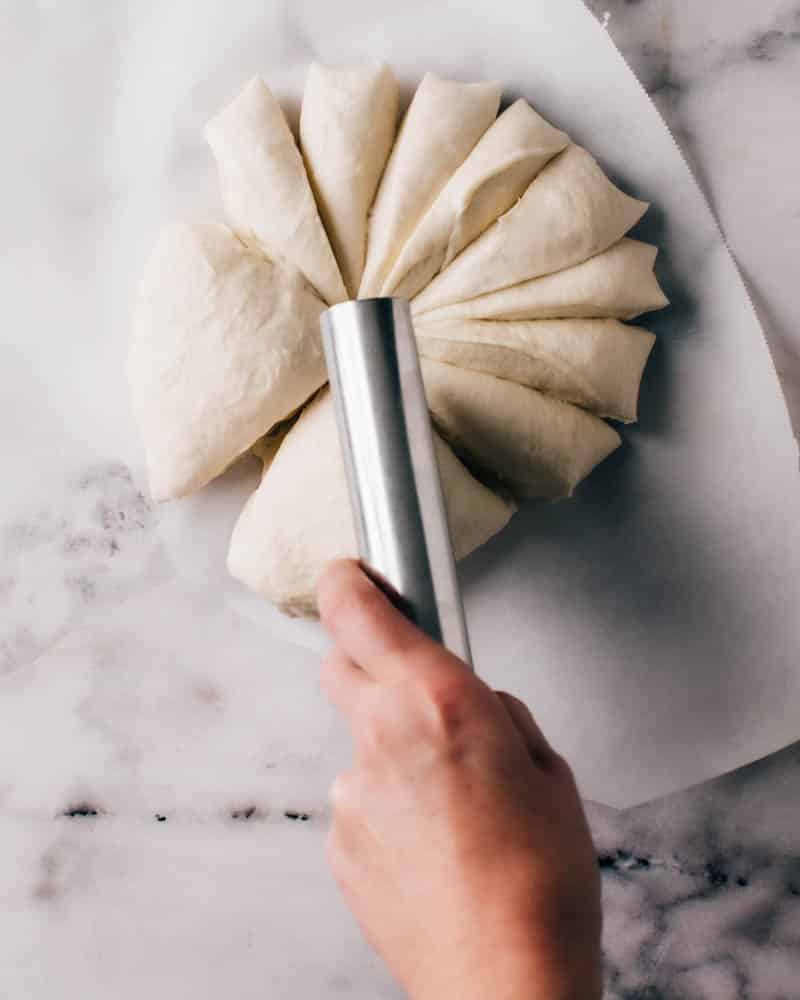
Paratha vs Naan: Ingredients and Preparation
Paratha:
Paratha is a layered flatbread made with plain flour is a staple in Indian restaurants. The word paratha is derived from the words ‘parat’ and ‘atta’ meaning layers of cooked dough, reflecting its unique characteristic – flaky layers.
Parathas are not just a side dish; in many instances, they are the main course, often stuffed with delicious fillings like aloo (potato) for Aloo Paratha, or paneer (cheese) for Paneer Paratha.
In some Indian households they are made with whole wheat flour, but in South Indian states like Kerala and Tamil Nadu, this unleavened flatbread is made with all purpose flour. Some recipes contain eggs.
There are different varieties across the globe, and you may find it under another name, like Kerala Parotta, Lachha Paratha, Roti Canai, Malabar Parotha or Buss up Shut.
Here is the paratha recipe recipe I developed for the entire 19 years I’ve been with my Indian husband.
This simple, step-by-step guide and easy recipe is the best way I’ve found to make soft paratha that stretches apart into flakiness. SO good. It’s a great accompaniment to my coconut curry chicken.
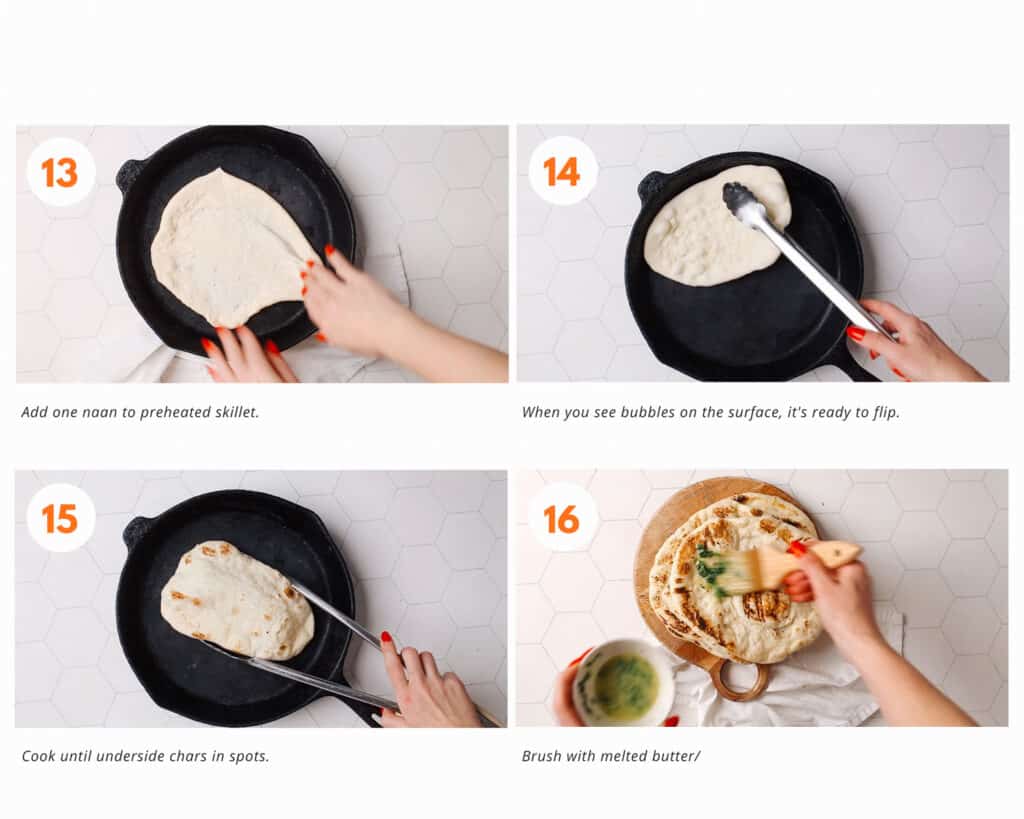
Naan:
Naan dough is a mix of all-purpose flour (maida, in hindi), yeast, and often includes baking powder or baking soda, and dairy like yogurt or milk, and sometimes eggs, to give it that distinct, rich taste and texture.
After kneading and letting it rise, the dough is rolled into an oval or teardrop shape.
Naan is traditionally baked in a tandoor, which lends it that unique smoky flavor. Check out my viral butter naan recipe that gives you that tandoor taste right on your stovetop!
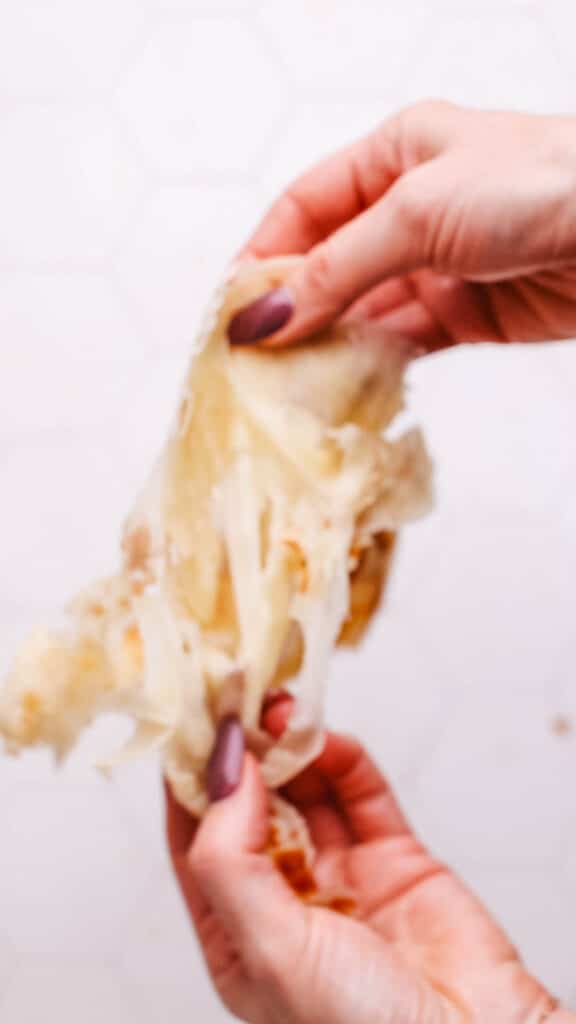
Paratha vs Naan: Texture and Flavor
Paratha:
Parathas are all about those flaky, buttery layers that give it a rich texture.
It’s usually crispy on the outside while still being soft inside.
The the layered-in ghee or butter adds a hearty, slightly nutty flavor.
You can enjoy parathas plain or use them to scoop up curries and gravies.
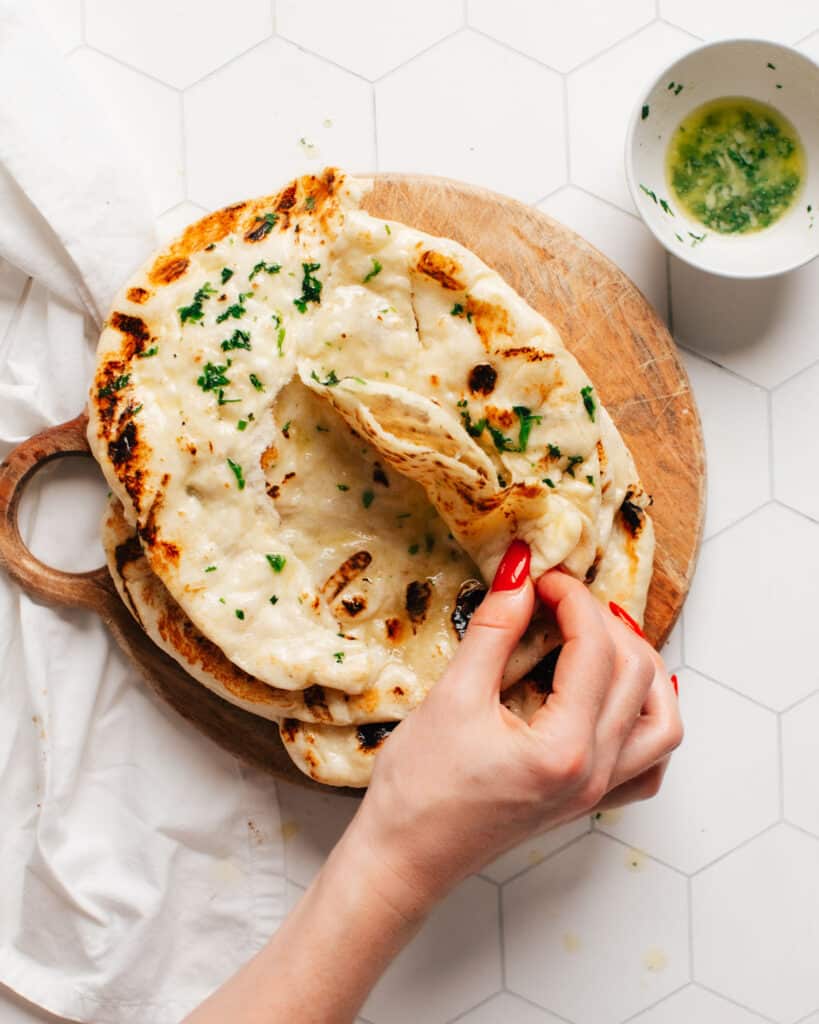
Naan:
Naan, on the other hand, is famous for its pillowy softness and chewy texture, with a bit of crispness around the edges.
The yeast fermentation and dairy ingredients in the dough give it a unique tangy flavor and a touch of richness.

Paratha vs Naan: Cultural and Historical Significance
Paratha: Parathas are a real treat in Indian cuisine, often associated with comfort and indulgence.
In my family, parathas are a weekend special, served with coconut curry chicken, butter chicken or butter paneer.
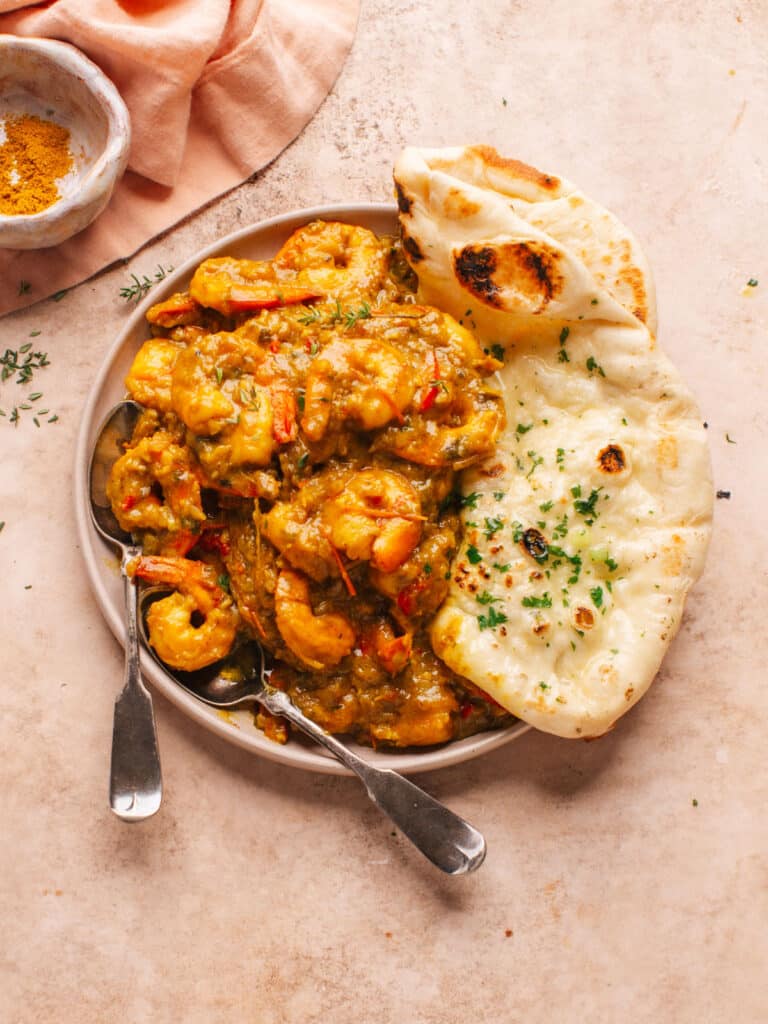
Naan: Naan holds its own in terms of history, often linked to lavish meals and celebratory occasions. Traditionally baked in a tandoor and made with refined flour and dairy, naan was considered a bit of a luxury.
In India and North America, both are more commonly found in restaurants than in everyday home cooking, making them a special addition to a meal rather than a staple bread (like roti or chapati).
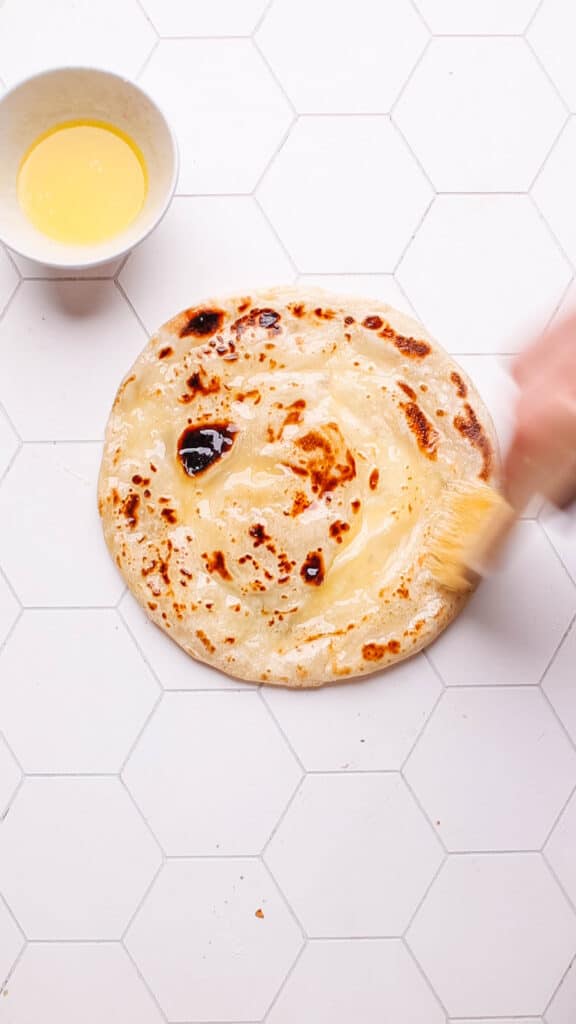
Paratha vs Naan: Regional Favorites
Paratha:
In South Asia, particularly in India and Pakistan, paratha is a popular and versatile staple in many households.
It’s enjoyed in numerous ways, from being served plain for breakfast to being stuffed with a variety of fillings like spices, vegetables, potatoes or minced meat for a more substantial meal.
Parathas are commonly paired with yogurt, pickles, chutneys or a side of flavorful curried stew.
My husband is from Kerala, where “parotta” is served alongside curries as part of a main meal for lunch or dinner. (Read more about Kerala Parotta here.)
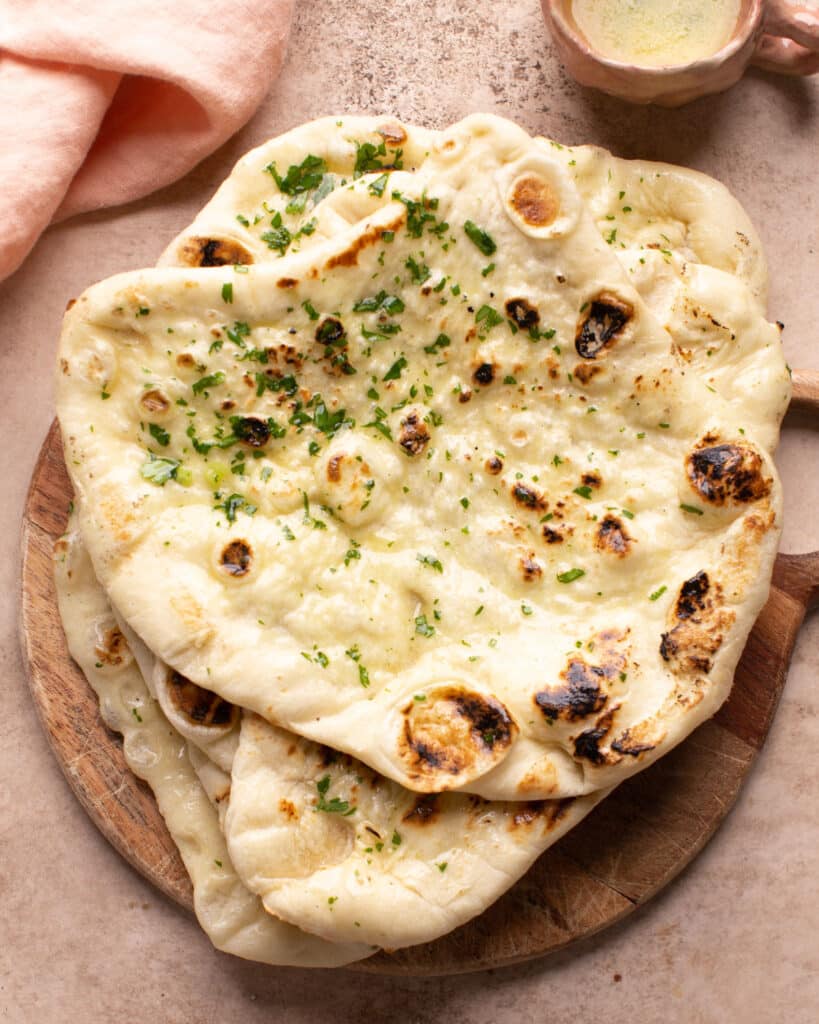
Naan:
While naan is a favorite in Northern India, it has gained significant popularity in Western countries, primarily as a restaurant favorite.
It’s often the go-to choice for accompanying richer, more elaborate dishes like curries.
You’ll find naan in many forms, ranging from plain to stuffed varieties such garlic naans, as aloo naan (potato-stuffed) or keema naan (minced meat-stuffed), turning the yummy bread into a complete snack.
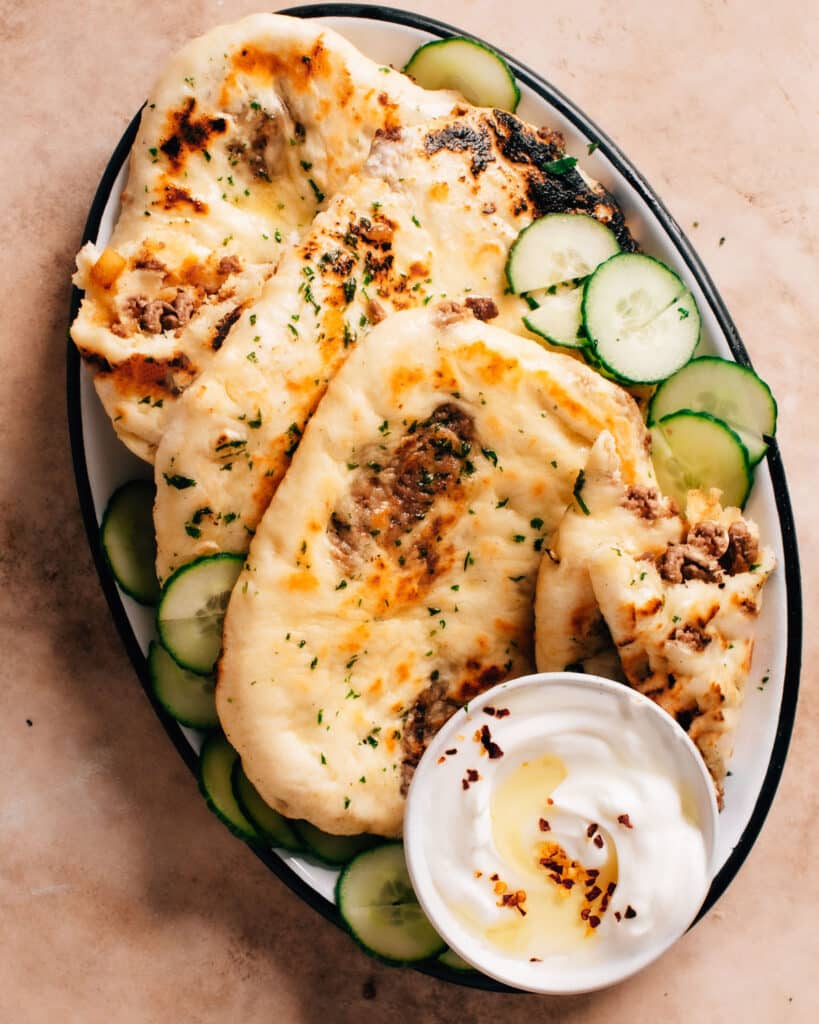
Making this delicious type of bread is a bit of an art, but it isn’t difficult. You have to roll out the paratha dough using a rolling pin, then executing a series of ghee-layering and folding to achieve the perfect flaky texture. The preparation is quite similar to making puff pastry.
Cooking it requires a flat frying pan, griddle or tawa over medium-high heat, and the result is a crispy flatbread that’s both satisfying and versatile. Whether it’s plain Parathas for a delicious breakfast or chicken paratha for a more filling meal, it’s a beloved part of Indian food culture.
Paratha vs Naan: Nutritional Showdown
Paratha tends to be higher in calories and fat, especially if it’s stuffed or layered with additional ingredients.
However, it is often made with whole wheat flour and if so, can offer more fiber.

Naan, made with all-purpose flour and dairy products, also packs a higher calorie and fat content due to ingredients like yogurt or milk.
While it may have a richer flavor and texture, these added elements contribute to its overall nutritional profile.
Nutrition Facts for Naan:

The values here are based on this butter naan recipe, calculated using this nutrition calculator.
Nutrition Facts for Paratha:

The quantities are derived from this paratha recipe, again using this nutrition calculator.
Why We Can’t Choose Between the Two
There’s something incredibly special about both paratha and naan that keeps me and Adarsh coming back for more. Paratha, with its flaky layers and rich texture, reminds me of cozy family dinners in Amma’s house in India. It’s like a warm hug in the form of food. Naan, on the other hand, is this delightful, soft bread that’s perfect for sopping up the last bits of a delicious Malai Kofta or Aloo Gobi (Potato and Cauliflower Curry) during a dinner with friends at home. Honestly, I can’t imagine my kitchen (or my life) without the unique joys that both these breads bring.
Don’t miss these delicious flatbread recipes:

If you love flatbreads as much as I do, don’t miss my favorite recipes!
- Poori (also spelled Puri, a deep-fried flatbread often stuffed with chickpeas – chana masala – as chana bhatura)
- Butter naan (the recipe that keeps going viral on Instagram)
- Aloo naan (with a masala potato stuffing)
- Kheema naan (filled with spicy ground meat)
- Roti (the staple recipe I’ve been perfecting for 20 years!)
- Fresh Flour Tortillas (it’s super easy to make homemade flour tortillas. And this recipe is also delicious as a wrap!)
- Turkish Bread (soft, fluffy flatbreads)
And don’t miss the Roti vs Naan debate (5 key differences and why I love both!).








